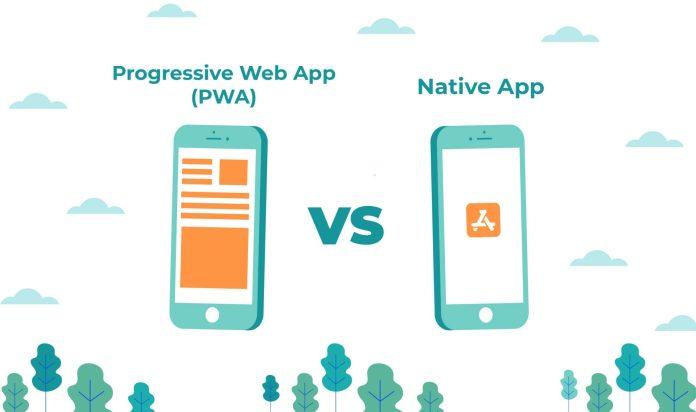In today’s fast-paced digital landscape, businesses are constantly seeking new ways to engage with their customers and enhance their online presence. One crucial decision that often arises is whether to invest in Progressive Web Apps (PWAs) or Native Apps. Both options have their merits, but which one is the better investment for your business? In this article, we will explore the key differences and advantages of PWAs and Native Apps, helping you make an informed decision that aligns with your mobile app strategy.
Progressive Web Apps vs. Native Apps
To kick things off, let’s clarify what Progressive Web Apps (PWAs) and Native Apps are.
What Are Progressive Web Apps (PWAs)?
PWAs are web applications that offer a native app-like experience within a web browser. They are built using standard web technologies like HTML, CSS, and JavaScript. PWAs are known for their ability to work seamlessly across different platforms and devices.
Here are some key features and benefits of PWAs:
- Cross-Platform Compatibility: PWAs work seamlessly on various platforms and devices, eliminating the need for separate codebases.
- Cost-Effective Development: Developing a PWA is often more cost-effective than building multiple native apps for different operating systems.
- Improved SEO: PWAs are indexed by search engines, making them more discoverable to users searching for relevant content.
- Easy Updates: PWAs can be updated instantly, ensuring users always have access to the latest features.
What Are Native Apps?
Native Apps, on the other hand, are applications specifically developed for a particular operating system, such as iOS or Android. They are downloaded and installed directly on a user’s device from app stores.
Here are some advantages of Native Apps:
- Optimal Performance: Native apps typically offer superior performance compared to PWAs, as they are optimized for the specific OS.
- Access to Device Features: Native apps can utilize device features such as GPS, camera, and push notifications more efficiently.
- Enhanced User Experience: The look and feel of native apps are often preferred by users, leading to higher user engagement.
PWA vs. Native Apps: A Comparison
Progressive Web Apps (PWAs) and Native Apps are two distinct approaches to developing applications, each with its own set of advantages and disadvantages. This comparison delves into the key differences between the two to help you make informed decisions for your development needs.
PWAs:
- Accessibility: PWAs are web-based applications that can be accessed via a web browser on various devices, making them platform-agnostic.
- Cross-Platform Compatibility: They work seamlessly on different operating systems, including iOS, Android, and even desktop platforms.
- Installation: PWAs don’t require users to download and install from an app store; they can be added to the home screen directly from the browser.
- Updates: Developers can push updates instantly since PWAs are hosted on web servers.
- Offline Mode: PWAs can function with limited or no internet connectivity, thanks to service workers that cache essential data.
- Discoverability: PWAs can be found through search engines, making them easier to discover.
Read More:- How social networking apps are different from dating apps
Native Apps:
- Performance: Native apps are designed specifically for a particular operating system, which can result in optimized performance and responsiveness.
- Access to Device Features: They have deep access to device hardware and features, such as camera, GPS, and sensors, offering more functionality.
- App Stores: Native apps are distributed through app stores (e.g., Apple App Store, Google Play Store), which can enhance credibility and user trust.
- User Experience: Native apps often provide a smoother and more integrated user experience due to their platform-specific design.
- Development Language: Different languages are used for native app development (e.g., Swift for iOS, Java/Kotlin for Android).
Ultimately, the choice between Native App and PWA development depends on your project’s specific requirements. PWAs are favored for cost-effective cross-platform solutions and fast development cycles, while Native Apps excel in delivering top-notch performance and leveraging device capabilities. The decision should be made based on your target audience, budget, and desired user experience.
Conclusion
In conclusion, the choice between PWAs and Native Apps depends on your business goals, budget, and target audience. If cost-effective development, cross-platform compatibility, and a seamless web-to-app experience are your priorities, PWAs are a strong contender. On the other hand, if you require the highest level of device integration and performance, Native Apps may be the better choice.
Remember that the ideal solution may also involve a combination of both PWAs and Native Apps, depending on your specific business needs. As technology continues to evolve, staying adaptable and open to new possibilities will be key to your business’s success.
